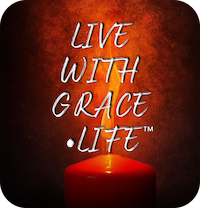Creativity takes courage.~ Henri Matisse
For many of us, we limit the concept of creativity to the arts: painting, drawing, writing, music, dance, and such. It’s true these activities require creativity. But there is another aspect of creativity: creative thought. Writing seems to bridge both aspects of creativity – the artistic aspect and the thought aspect. Creative ability is the skill of using our imagination in solving a problem. So, if you’re like me and cannot draw or paint, chances are you have creative ability in another area.
Creative ability can be seen in putting together a meal from odd ingredients in the fridge and pantry. Or maybe you can find your way home via an alternate route because of a road closure. How many of us can read even when words are misspelled or missing a letter due to a typo? Our minds produce a solution to a problem, and that is creative thinking. We really are more creative than we might think!
But that doesn’t tell us how to go about developing creativity in our lives, helping us move forward after loss. How would I go about becoming more creative? If I remember that creative thinking uses our imagination to solve a problem, I will realize my need to define the problem. In grief, this may be the most difficult part of creativity. Why not ask a friend to help you figure out what the problem is? That may be all that it takes!
After my husband passed, I had a horrible time remembering to eat. The first several days I just couldn’t keep anything down. Because I live in the low desert in Southern California, it was all I could do to drink enough water and unsweet tea with no lemon (the only things that wouldn’t come back up most of the time) to keep me hydrated. Maybe a week passed, and I couldn’t figure out where the extreme lethargy came from. I called a friend and asked if this extreme lethargy was normal. I could barely get out of bed. He asked if I had eaten anything that day or the day before. Nope! Only water and iced tea for the past week or more, nothing else settled in my stomach.
Well, I needed to eat! The problem was the only thing that even began to sound appetizing was nachos and quesadillas. I knew I couldn’t live on nachos and quesadillas and had to decide what to add that would settle. Enter mac and cheese! Then bananas. At the two-week mark, I ate a burrito, and it stayed down! Next came a tuna sandwich. Over the course of a couple of weeks, I was able to add most of the food I knew I should be eating. I solved the problem by deciding I should start with my comfort foods, which consist of cheese and carbs. Then I decided to try an additional simple protein in the form of a simple bean burrito. Then added on little by little, kind of like when solid foods are introduced to babies.
This has worked well for me in other challenges. First, identify the problem, then find a solution to that problem. When we begin creatively solving problems, our minds begin to function better, and the brain fog begins to lift. Creativity is essential to moving forward after loss.
Blessings as you build your creativity,
Cindy

0 Comments